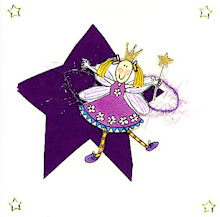
十二生肖即十二属相, 是中国古代特有的一种民俗现象。它是一种以动物名称纪年的特殊方式。所谓十二属相就是用十二地支和十二种动物相对应搭配而成,每一种动物代表一年。
在许多场合,当一个人被问及他的年龄时,他往往只告诉他的属相。 比如:属牛或属龙等。 可见十二属相在民间的影响是很深的。
首先,我们看一下十二地支和十二种动物的结合问题。一般认为这种结合始于东汉(公元25-220 年),在公园1 世纪已经比较流行。因为在汉代才正式使用天干地支纪年法,把十二地支和十二种动物结合在一起也表示年,似乎是合乎逻辑的。这一点许慎的《说文解字》中可以得到证实。
《说文解字》在解释“巳”字时说:“巳为蛇象形” , 另外,在公元1 世纪成书的 《吴越春秋》中有这样的记载:“吴在辰, 其位龙也, 故小城南门上反羽为两鲵* 以象龙角;越在巳地, 其位蛇也, 故南大门上游木蛇,北向,首内,示越属于吴也。
这段话中,辰和龙相对应, 巳和蛇相对应。由此我们更有理由认为:这种十二地支配十二种动物的结合方式, 在公元1 世纪时已经普遍使用。
十二地支和十二种动物的配合世界顺序排列的,他们的顺序就是子-鼠, 丑-牛, 寅-虎, 卯-兔, 辰-龙, 巳-蛇, 午-马, 为-羊, 申-猴, 酉-鸡, 戌-狗, 亥-猪。 上面说到这种对应关系在东汉时期已经形成,但动物十二支用来与人的生年来你在一起,是否始于东汉,史无明证。认为始于东汉的学者,也不过是推测而已。据史书记载,明确表明生年和书香关系,至晚在南北朝
(公元420-581 年)时期已经有例证。 《南齐书五行志》中有 “东昏侯属猪”, “崔慧景属马” 等记载。 到了唐代(公元618-907年),十二生肖更为流行。在铜镜的纹饰上以及其他工艺品都有十二生肖的图案。

English version
Shi'er shengxiao or shi'er shuxiang (12 Chinese Horoscope) is a kind of Chinese folk custom. It is a way to designate the years in the names of animals. The twelve animals actually represent the twelve earthly brances,one animal symbolizing one year. On many occasions, when someone is asked about his age, he will reply by naming the animal of the year in which he was born, e.g the year of the Ox, or the year of the dragon,etc. Thus it is evident that the twelve animals are deeply rooted among the people.
It is generally agreed that the association of the twelve earthly branches and the twelve animals started in the Eastern Han Dynasty (25-220 A.D) and gained popularity in the first century A.D.
Since the lunar calendar was formally adopted in the Han Dynasty, according to which the years were designated by the heavenly stems and the earthly branches, it is therefore logical to combine the twelve earthly branches with the twelve animals to designate the years. This can be verified in the book Shuo Wen Jie Zi. Its explanation of the character si, one of the twelve branches,goes like this : " It is a pictographic character indicating the shape of a snake." We can also find records in another book, The Annals of Wu and Yue, written in the first century. There was a passage about the relevence between chen (another eartly branch) and the dragon and between si and the snake, which further proved that the combination of the branches and the animals was already widely adopted in the first century.
This combination follows a certain order, which goes like this : zi-shu (rat), chou-niu (ox), yin-hu (tiger), mao-tu (rabbit), chen-long (dragon), si-she (snake), wu-ma (horse), wei-yang (ram), shen-hou (monkey), you-ji (rooster), xu-gou (dog), and hai-zhu (boar). It is still uncertain whether the association of it with people's years of birth started in the Eastern Han Dynasty. According to historical records, the clear reference to animals as indication of the years of birth appeared as late as in the Southern and Northern Dynasties (420-581 A.D). It became more prevalent in the Tang Dynasty (618-907 A.D and the patternof the twelve animals were very popular on handicraft articles then.

Tidak ada komentar:
Posting Komentar